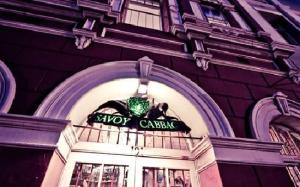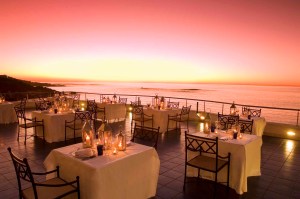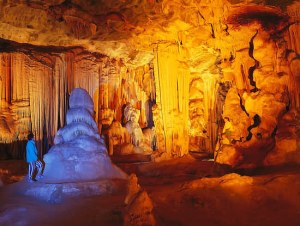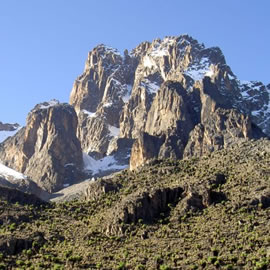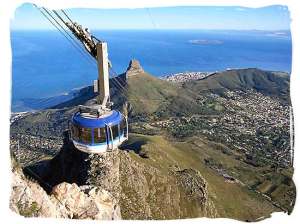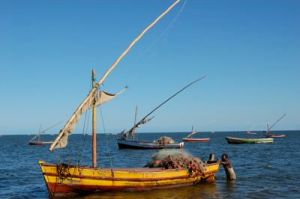Archive
Top 5 Restaurants in Cape Town
Fine dining is intrinsic to a good holiday. As most holidays have to do with indulgence and new experiences, what better time to treat yourself to the best restaurants you can afford while sampling some exotic cuisine?. Everywhere you look you’ll find lists and reviews of the top restaurants in such and such a place and here is one more.
The top 5 restaurants in Cape Town
1) According to Bestcapetownrestaurants.com, Azure Restaurant at the Twelve Apostles Hotel and Spa tops the list. The executive chef in charge is Henrico Grobbelaar. Grobbelaar has won several awards for his extraordinary culinary skills and has earned a place among the most respected chefs in the country.
One of the really nice things about Azure is that it gives vegetarians their due consideration; for example, one the most popular starters is the 12 vegetable salad. The grilled seafood platter is simply to die for and the dark chocolate torte is sublime.
2) Buitenverwachting Restaurant in the Constantiaberg deserves its second spot. The views of the vineyards alone are worth the trip, but people don’t flock for the views. The restaurant consistently makes top 10 lists thanks to the efforts of award-winning Chef Edgar, who has been compared to Heston Blumenthal, one of the UK’s most famous gastronomes.
Try the creamy mielie-bacon soup, saddle of springbok and honey and saffron ice-cream.
3) Cabbage is not something traditionally associated with fine dining but the Savoy Cabbage Restaurant is an exception. It’s in the centre of Cape Town itself, just off Buitengracht and Bree Streets on Hout Street. At its helm are Caroline Bagley and Chef Peter Pankhurst, together they have won the 2009 Andrew Harper Award, several American Express Platinum Awards and were declared a “Hot Spot” by CNN.
The varied menu includes twice baked cheese soufflé with paprika oil; salad of spiced roasted nuts, red wine-poached pears, mesclun and goat’s feta; grilled hake with pea and champagne risotto and split truffle oil; or fennel dusted warthog loin with bashed turnip and potato and apricot and vanilla Sauce, and red onion marmalade. End it all with polenta lemon cake and chantilly cream or caramel chocolate-chunk tart and caramel ice-cream.
4) Harbour House in Kalk Bay harbour is set right on the edge of the sea proving outstanding views of crashing waves and, if you get your timing right, seals at supper time. On the other side you’ll see the picturesque village of Kalk Bay set on the mountainside. As you can imagine, the menu is geared towards seafood lovers.
The sautéed paprika calamari is a firm favourite but meat-eaters will revel in the mustard coated rack of lamb. For dessert you do not want to miss the trio of sorbet or the classic crème brulee.
5) For something a little different try Stardust Restaurant in Rondebosch. It’s dinner theatre, but with a twist. All the entertainment is provided by the waiters and waitresses, who tend to be students at the nearby University of Cape Town. Depending on who is on duty you get to hear jazz, opera, rock and comedy.
What you’ll also get is outstanding food. The theme is North African and Mediterranean and, once again, vegetarians are more than welcome. The falafel is divine, the veg moussaka out of this world and the beef tagine succulent.
Whatever your tastes, you’ll find something in the five-star class to suit you.
The Cango Caves, Little Karoo
29km from Oudtshoorn, at the head of the picturesque Cango Valley, lies the spectacular underground wonder of the Klein Karoo – the Cango Caves. Situated in a limestone ridge parallel to the well knownSwartberg Mountains, you will find the finest dripstone caverns, with their vast halls and towering formations.
The Cango Caves are a series of dripstone caverns that open into vast halls of towering stalagmite formations with names like ‘the bridal couple’, ‘glass flower fantasy’, ‘weird cango candle’ and ‘the hanging shawl’. Not all of the caves are open to the public .The main sections are available for amazing exploratory subterranean walks that include fumbling around on all fours in an effort to see all that is viewable.
The Cango Caves lie in the Swartberg Mountain Range in a limestone belt measuring 0,5km in width and almost 16km in length. The limestone layer was formed by the deposit of ‘oolites’ which are loosely-bound calcium carbonate crystals. Due to the age of the limestone (750 million years) no fossils have been found.
This part of the continent was once below the ocean. As the continent rose and upliftment occurred, the Little Karoo finally found itself above the water level.
The caves only started to form some 20 million years ago, however, when the water level dropped to such an extent that the ground water could start to seep into the limestone. As the water seeped into the ground it absorbed carbon dioxide from the decaying plant and animal matter in the soil and this made it fairly acidic.
As it seeped into the limestone, cavities were created that filled with water. Rivers also formed on the surface and cut deeply enough into the limestone to allow them to reach the level of the water pockets. This caused the water to flow out about 4 million years ago. The cave was then, for the first time, exposed to air and the speleothems or cave formations could begin forming.
For thousands of years, the caves were unknown, except to animals. However, about 10 000 years ago, the Khoisan used the entrance area of the cave as shelter. They never wandered deeper into the cave though due to their superstitious nature. The entrance area to the Caves was originally rich in bushman paintings though with time these have been damaged. The San left this area and their cave approximately 500 years ago.
Multilingual tours :
All tours are offered in English but an Afrikaans, German, French or other language guide may be available (please check availability when booking if you have a preference).
Africa has some of the best scuba diving in the world
Africa is blessed with abundant wildlife. Everyone knows about the Big 5 and the gorillas, but not everyone considers the life that lies off the continent’s coast. There are plenty of world-class scuba diving sites all around Africa.
One of the most popular destinations is Mozambique, which not only has varied scuba diving sites but has the added advantage of being affordable. After exploring wrecks and reefs and gazing in wonder at the vibrant colour beneath the waves, you can sit on the beach and enjoy the freshest, cheapest seafood you’re likely to find anywhere in the world.
Other obvious dive sites are in the Seychelles and Mauritius, but have you thought about scuba diving in Kenya?
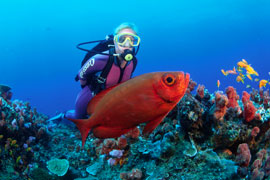
Kenya’s coast caters to all kinds of divers. There are numerous centres and qualified instructors offering beginner scuba diving courses; while more experienced divers can book a trip with one of the many tour operators. Special treats include wreck dives, reef dives and abundant marine life, including turtles, eels, sharks, coral fish and tuna. You can dive in Kenya throughout the year but the best time is between October and April.
Zanzibar is also a perennial scuba diving favourite. The best diving sites can be found in the northern parts of the island and the best times to dive is between September and October when divers have the prospect of bumping into some humpback and sperm whales.
Pemba Island is just a little way nort
h of Zanzibar and is an equally awe-inspiring scuba diving destination. Aside from the pristine beaches and friendly folk you can duck beneath the waves and visit giant barracuda, whale sharks, hammerhead sharks, manta rays and dolphins.
Madagascar is an under-rated scuba diving destination outshone by its better known rivals – Seychelles, Zanzibar and Mauritius. So many people don’t know that it contains the largest continuous reef in the world. As with its land animals, a great junk of the marine life is endemic to Madagascar’s waters, but you can also see five different turtle species, 56 types of shark, over 1000 species of bony fish and 34 types of cetaceans.
Hiking in Africa for beginners and experts
There are plenty of mountain peaks in Africa for holiday makers to get their hiking kicks. In fact, Africa is something of a hiker’s paradise. The first choice is Mount Kilimanjaro, which is a hybrid between a fully fledged mountainclimb and a hike. Kilimanjaro stands nearly 5900m tall but it’s possible for someone with average fitness levels to reach the top without too much effort. You’ll need a reputable tour operator, a waterproof hiking kit and comfortable shoes.
Mount Kenya is the second highest mountain in Africa and, perhaps fittingly, is within sight of the tallest – Kilimanjaro. Mount Kenya is actually a volcano and comprises three impressive peaks, each around 5000m tall. The three peaks provide climbs ranging from very technical to merely taxing. There are a number of hiking routes that take between four and seven days. Most tour operators provide a guide, cook and porters to help carry the load, but you will be expected to lug most of your equipment yourself.
Mount Mulanje in Malawi is not as tall as the two mentioned above, but at around 3000m it’s not a doddle either. There are a number of hiking trails winding through the forests at the foot and on the lower slopes of the mountain but more serious climbers might like to try their hand at the granite climbing at Chambe and Matambale. Most routes to the top of the mountain are manageable for weekend hikers. Day hikes and longer trails are available. Bear in mind that you will need a permit before you climb the mountain, but it isn’t terribly expensive.
Let’s not forget the Drakensberg in South Africa. The extensive range covers portions of the Free State and KwaZulu Natal. There are a number of peaks, including Champagne Castle, Cathedral Peak and Monk’s Cowl. They’re good fun for weekend hikers as most of the trails can be completed in one day, but more serious climbers can also enjoy longer hikes over several days.
Come to South Africa and do it all
South Africa has a thriving tourism industry and it’s no wonder because the country has an enormous variety of things to see and do. From 5-star seaside accommodation to rugged safaris and mountain resorts South Africa has it all.
When it comes to luxury accommodation it’s hard to top the One&Only at Cape Town’s Waterfront. The One&Only is probably the most luxurious hotel in South Africa bar none. It boasts an idyllic spa and some of South Africa’s most acclaimed restaurants, including Nobu, which is run by Nobuyuki “Nobu” Matsuhisa. Matsuhisa has the distinction of being one of a few Michelin-starred chefs in the country.
When comes to fine dining, however, Nobu is topped by Rust en Vrede Estate in Stellenbosch, which won the Restaurant of the Year award from Eat Out, South Africa’s premier restaurant guide.
Of course when it comes to safaris, the Kruger National Park is at the top of the list. South Africa has a number of game reserves and national parks, but the Kruger Park is not only the biggest, it also offers the widest range of accommodation, safaris and related activities.
South Africa is a relatively big country and its attractions are spread out from north to south, east and west. You can minimise the distances and travel South Africa by train. The Blue Train is arguably the most luxurious train in South Africa. The train travels from Pretoria to Cape Town with a stopover in Kimberley, and from Cape Town to Pretoria with a stopover in Matjiesfontein, giving you a peak into small town living in South Africa. It boasts de luxe suites, a wood-panelled lounge and club car, fine dining, and a jewellery boutique.
You can book a range of holidays in South Africa, from package tours that include safaris, seaside attractions and a bit of mountaineering to private deals that allow you to set the pace.
South Africa has what ever you want from your holiday destination, and more.
There’s more to Maputo than beaches and prawns
There’s more to Maputo than beaches and prawns
Mozambique is a favourite destination for scuba diving and snorkelling, not to mention eating stacks of prawns, which are more affordable in Mozambique than just about anywhere else in the world. Maputo is the country’s capital city. It’s on the coast, so it offers all the traditional Mozambican attractions, but it also has so much more to offer.
It’s a thriving port city, so its harbour is abuzz with activity. But moving away from ocean-related activities we have the Central Railway Station, which boasts one of the most beautiful old buildings in the city – which may or may not have been built by Gustave Eiffel – he of the famous Paris tower. The station often has live music and assorted entertainment on Friday and Saturday evenings and is a good spot to mingle with locals out for a night of fun.
The Iron House, which, common consensus has it, was designed by Eiffel, is also not to be missed. It was supposed to be the Governor’s house but a critical oversight – steel is not a practical building material in a region blessed with a blazing sun and almost constantly hot weather – meant that the governor was unable to live in it.
The Jardim Tunduru Botanical Gardens are worth a visit for its cycad collection and assorted exotic plants. Failing that you can always boast of visiting a garden by one of the most famous landscapers of the 19th century. The gardens were designed by Thomas Honney, who designed gardens for various royalty of the era, including the Sultan of Turkey and the King of Greece.
Not far out of Maputo, about 80km, is the Maputo Elephant Reserve, which is part of the Lubombo Transfrontier Conservation Area, a joint project by conservation authorities in Mozambique, South Africa and Swaziland. Obviously, there are plenty of elephants to be seen, but there are also crocodiles, hippos and an awful lot of flamingos.
Don’t let malaria spoil your African holiday
Malaria is a nasty disease prevalent in large parts of Southern Africa. It kills more than one million people per year and 300 million cases are reported annually. 25% of childhood deaths in Africa are caused by malaria. But that doesn’t mean you should rule sub-Saharan Africa out of your holiday plans. Malaria is preventable, provided you take the proper precautions.
When you first book your African holiday, be sure to ask your travel agent if you’ll be going into any malaria zones. If you are, you need to see your doctor to discuss prophylactics. There are a number of anti-malaria drugs available. The one you take will depend on where you’re going, the level of risk and your current level of health. Some areas are resistant to certain types of anti-malaria medicine, so you need to be very specific when you tell your doctor where you’re going. You’ll also need to discuss appropriate prophylactics for any children who will be accompanying you, as well as any pregnant women.
You need to start taking anti-malaria medication 4-6 weeks before you travel. And you need to continue taking it for up to four weeks after you come back. This is because some types of malaria lie dormant for weeks after infection, especially if it is in your liver.
In South Africa, most cases of malaria occur in the north-east, especially in the Kruger Park. If you’re planning a holiday in the Kruger Park try to time it to coincide with the dry season, as mosquitoes thrive during the rain. The dry season is in winter, from around April to October.
The northernmost parts of Namibia and Botswana also pose a risk, as do all of Mozambique, Zimbabwe, Zambia, Malawi, Tanzania and Kenya.
Prevention is better than cure
In addition to prophylactics, the best way to prevent malaria is to use your common sense. Invest in a good insect repellent – 20% to 35% DEET is recommended, don’t leave skin exposed, sleep under a net, sleep with the windows and doors closed and spray some insecticide in your room before you go to sleep.
Not only is malaria preventable but it is also curable.
Take the proper precautions and there is no reason why your African holiday can’t be all you dreamt and more.
